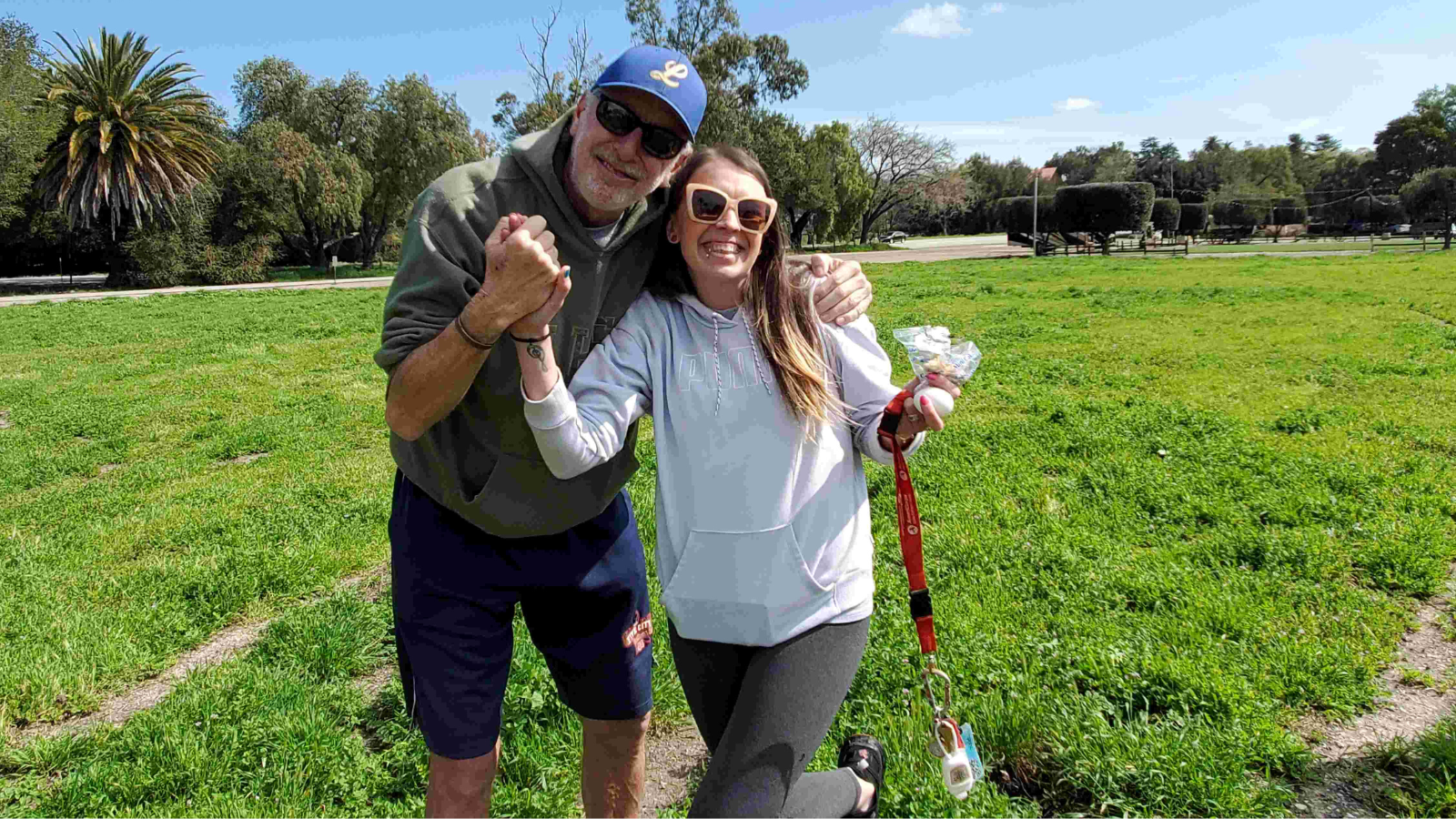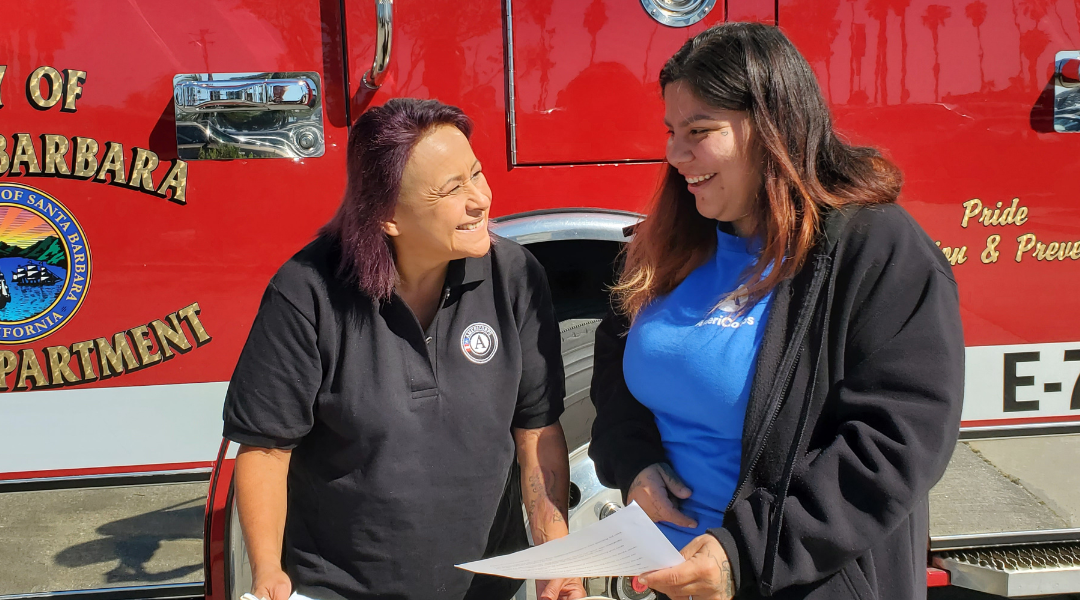
Photo caption: Santa Barbara Partnership AmeriCorps Members Ashley Przecha and George Crowder teamed up together to win an egg toss during a team building event in Los Olivos, California.
What is your program called, and how does it work?
Santa Barbara Country AmeriCorps Partnership for Veterans and Homeless works closely with local nonprofits and government agencies that are homeless service providers. Our organization focuses on a few things: outreach to people living on the streets, helping them get all their documents together so they can take advantage of housing opportunities, and helping them retain their housing. Our partnership with the Housing Authority of Santa Barbara County, which is a federal agency, is focused on retention.
California is a “housing first” state, which means that individuals aren’t required to – for example – be in treatment for substance abuse before getting access to housing. The idea behind that is, once they’re in housing and stable, they’ll be in a position to get treatment. We meet them where they’re at, continue engaging with them, and focus on harm reduction. That requires an enormous amount of collaboration.
Why did you want to be part of Generations Serving Together, bringing cogeneration into national service?
Santa Barbara has lots of young people who come to university here and stay, and it’s a place that’s always been popular with older people. So we have a really age-diverse group of AmeriCorps members already supporting our efforts. My co-director Lyiam Galo saw this grant opportunity, and it just made a lot of sense to build on the intergenerational work we’re doing. Now we send teams of older and younger people out together to do outreach to the homeless.
What problem is your program trying to solve?
Getting people housed and working to ensure they retain housing. Part of the challenge in Santa Barbara County is that there just isn’t enough housing for the number of homeless people on the streets. The issue isn’t always money and there is no quick fix.
If I were a funder, I’d make grants contingent on homeless services agencies and nonprofits working together. I know that’s a more complex way to set up a grant, but it’s really important that organizations collaborate. We actually do that well, and we don’t care who gets credit as long as the beneficiaries are getting the services they need.
What’s the value of a cogenerational approach?
A lot of the younger members are really tech savvy and good with all of the digital forms we use, so they help our older members who are slower to figure that stuff out. On the other hand, our older members tend to have stronger interpersonal communication skills and can support our younger members who may struggle with self-confidence when doing outreach.
We have an older member in her sixties who is resourceful. She has built an amazing network in the community. When someone says no, she finds another way. It’s that kind of confidence to keep going and keep pursuing a solution. She never shuts people down or burns bridges.
I’ve noticed that some of the younger members become discouraged and give up more easily. We also have a few younger members who are just learning how to advocate for themselves at their sites. So it’s about teaching them to stand up for themselves and find a way to create a positive experience in their work environment. It’s about helping them become more resourceful and develop thicker skin.
What’s your big audacious vision? If you succeed, what change will we see?
Our goal isn’t to end homelessness. It’s like poverty. You can never end poverty but we can mitigate its most harmful impact and work towards creating solutions to help people more effectively. Homelessness is similar.
We’re seven years in now and what we’re seeing is that a lot of the best homelessness service providers are starting to hire our former AmeriCorps members in leadership positions. That feels really good, to know that we’re developing future leaders who really love this work and will take a holistic approach to the problem and solution. People who work well with other agencies and see opportunities for collaboration.
I’d also love to see more cogenerational leadership in nonprofits and government agencies. Lyiam is 27 and I’m a former war correspondent and did USAID projects overseas. We’re a couple generations apart, but he always says to me, “I have your back.” We bring totally different perspectives and we figure things out together.
How can people get involved with your work?
We can always use more volunteers to help out at our intake centers. We also take in-kind donations, in addition to money. For example, bottled water, hygiene kits, clean socks, and that sort of thing. You can learn more and find contact information at unitedwaylife.org.
What are you most proud of in your life?
I left my job working in Ethiopia to come back to Santa Barbara and take care of my mom for five years. She was always my rock and she needed me, so I put my career on hold. I wasn’t a very patient person before that. I think I’ve become much more patient and compassionate. I’m proud of that.





